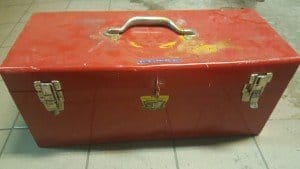A few weeks ago I came across a blog post by the Blunt Bean Counter on Ethical Wills that I liked, and I encourage anyone interested in this subject to check it out. Perhaps I can whet your appetite with my take on the subject here.
The man behind the blog and the website is Mark Goodfield, who is an accountant from Toronto. I would not necessarily call him an old friend of mine, but we did meet professionally last summer at a BDO SuccessCare course, “The Role of the Most Trusted Advisor”.
We spoke about blogging one day at lunch, and it was thanks to some of his comments that I undertook a rebranding and reworking of my online presence, for which the feedback I have been receiving from some of you has been gratifying.
An ethical will is essentially a letter that you write to your loved ones, outlining your wishes, which they can refer to and reread after you have passed away.
As Mark so nicely states, some examples of what people convey in an ethical will include:
- Your values
- Your hopes for your family
- An explanation of decisions made in your will
- Providing or asking for forgiveness
This is one of those ideas that seems to make so much sense to me, but that for many reasons is not as easy a sell as it appears on the surface.
It reminds me of Tom Deans’ great book, Willing Wisdom, in which he implores people to share the contents of their will with their beneficiaries. I get it, I love the idea, I encourage people to do so as well, but at the same time, I also know that he gets a whole heck of a lot of pushback whenever he gives a speech about the subject.
Now the title of this post mentions simplifying complexity, and that is where I want to go now, so please join me. This was its own separate blog post idea, but I often need to combine ideas because I seem to get way more than 52 ideas a year, and I vowed to keep these to once a week.
Whenever someone dies, the remaining family members are left to sort things out and move on. We have all heard stories about people who died without a will, or before ever having taken the time to put their proverbial affairs in order.
Let’s call that one “Simple Life, Complex Death”.
There is an alternative, but it takes some work, some foresight, and some courage. It’s all about doing the complex work up front, while you are still alive and of sound mind.
If you are willing to share the information about your decisions with your loved ones, you can make things as complex as you like. You do the hard work yourself, and then when you are gone, everything will be so much simpler for your family.
My father liked complexity more than most. He bought a farm as a retirement project, then bought more land from neighbours over time. When he was diagnosed with cancer, I feared that I would be stuck with the task of disposing of all these different acreages.
One of the greatest gifts he ever gave me was the fact that he sold the farm, in no less than four separate transactions to four different buyers before he died. All I had to do was go to the notary’s office four times to sign the papers and pick up the cheques.
But of course before doing any of that, we had a family meeting, during which we discussed whether or not we wanted to keep the farm in the family.
We knew what he wanted us to do after he died, because the day of his diagnosis, he went home and hand wrote a multipage letter to us, which I later dubbed his “manifesto”.
Little did I know it at the time, it was his Ethical Will.
During subsequent family meetings, we have referred to it often, mostly early on, less so now.
With Father’s Day around the corner, I wanted to say, “Thanks again Dad”.





